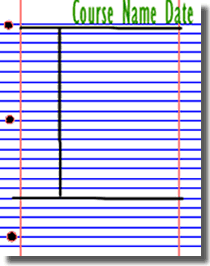陇山陇西郡
宁静纯我心 感得事物人 写朴实清新. 闲书闲话养闲心,闲笔闲写记闲人;人生无虞懂珍惜,以沫相濡字字真。
正文
I didn't know such styles until I physically lectured, surprisingly realizing that some students didn't get my point, seemly straight-forward and obviously to some students. I's puzzled.
In a one-on-one meeting with a senior teacher/advisor, he explained to me: As teacher, I found it's hard to balance out and nurture all learner styles and modes of 100+ students in a lecture hall. It's time-consuming to help students understand their own concrete/common sense learner style, out of four main modalities that educators often consider: kinesthetic (moving), visual (seeing), auditory (hearing), and tactile (touching). Suddenly, I backed track to my own college time.
I's puzzled to see some classmates didn't take note at all. I's constantly crushed by fear that I missed some words in my in-class note (Section 1). I borrowed other's notes to fill in (Section 2) After class, I asked teachers for clarification of certain points (Section 3). I read references and added my own thought into my note-taking (Section 4). Eventually, I invented such structure to accommodate these 4 sections of my study. Such learning style helped me in one course, I earned the number one grade in over 100+ students, leading to the professor pulled out my note-taking to show his entire class! I's quite embarrassed that I worked so hard for his class, compared to those students who didn't take notes in class - I admired how smart they're!
Such structure of note-taking helped me survive those 30 years of school, training me to mold in my own learning style of brain-hand-visual-hearing-all-together. If I don't do all of these activities, I feel lost, disoriented, waste of time - not at peace of mind. Note-taking life expanded to reading for pleasure - compulsory obsession of taking notes - keep pen in hand, paper one the side - reading to write down what I read.
Only taking class with American medical students at Med Sch, did I hear that note-taking techniques - "The Cornell Note-taking System". "The Cornell Notes system is a note-taking system devised in the 1940s by Walter Pauk, an education professor at Cornell University. Pauk advocated its use in his best-selling book How to Study in College." Wikipedia The Cornell note taking method provides a format for condensing and organizing class notes, as below.
http://coe.jmu.edu/learningtoolbox/cornellnotes.html

D ivide the paper into three sections. -
Draw a dark horizontal line about 5 or 6 lines from the bottom. Use a heavy magic marker to draw the line so that it is clear.
- Draw a dark vertical line about 2 inches from the left side of the paper from the top to the horizontal line.

D ocument - Write course name, date, and topic at the top of each page.

W rite notes. - The large box to the right is for writing notes.
- Skip a line between ideas and topics.
- Don't use complete sentences. Use abbreviations, whenever possible. Develop a shorthand of your own, such as using "&" for the word "and".

R eview and clarify. -
Review the notes as soon as possible after class.
-
Pull out main ideas, key points, dates, and people, and write these in the left column.

S ummarize. - Write a summary of the main ideas in the bottom section.

S tudy your notes. -
Re-read your notes in the right column.
-
Spend most of your time studying the ideas in the left column and the summary at the bottom. These are the most important ideas and will probably include most of the information that you will be tested on.

**
There are
The VAK learning style uses the three main sensory receivers: Visual, Auditory, and Kinesthetic (movement) to determine the dominant learning style. It is sometimes known as VAKT (Visual, Auditory, Kinesthetic, & Tactile).
Still others learn through kinesthetic means, or a combination of the three. Every person has one primary learning mode. Once you identify that mode, you can focus on it.
For visual mode, the students are more prone to accept learning through interpreting charts, graph figures, and pictures.
Kinesthetic Learners (input). Are often physically adept; Learn through experience and physical activity; Benefit from demonstration.
Individuals differ in how they learn most effectively; most people favor different combinations of visual, auditory, reading, or kinesthetic (VARK) learning modes.
Visual, Auditory, and Kinesthetic Learning Styles (VAK) The VAK learning style uses the three main sensory receivers: Visual, Auditory, and Kinesthetic (movement) to determine the dominant learning style. It is sometimes known as VAKT (Visual, Auditory, Kinesthetic, & Tactile).
Kinesthetic learning - Wikipedia
 |
| D ivide the paper into three sections.
|  |
| D ocument
|  |
| W rite notes.
|  |
| R eview and clarify.
|  |
| S ummarize.
|  |
| S tudy your notes.
|  |
https://en.wikipedia.org/wiki/Kinesthetic_learning
Kinesthetic learning (American English), kinaesthetic learning (British English), or tactile learning is a learning style in which learning takes place by the students carrying out physical activities, rather than listening to a lecture or watching demonstrations.
评论
目前还没有任何评论
登录后才可评论.




